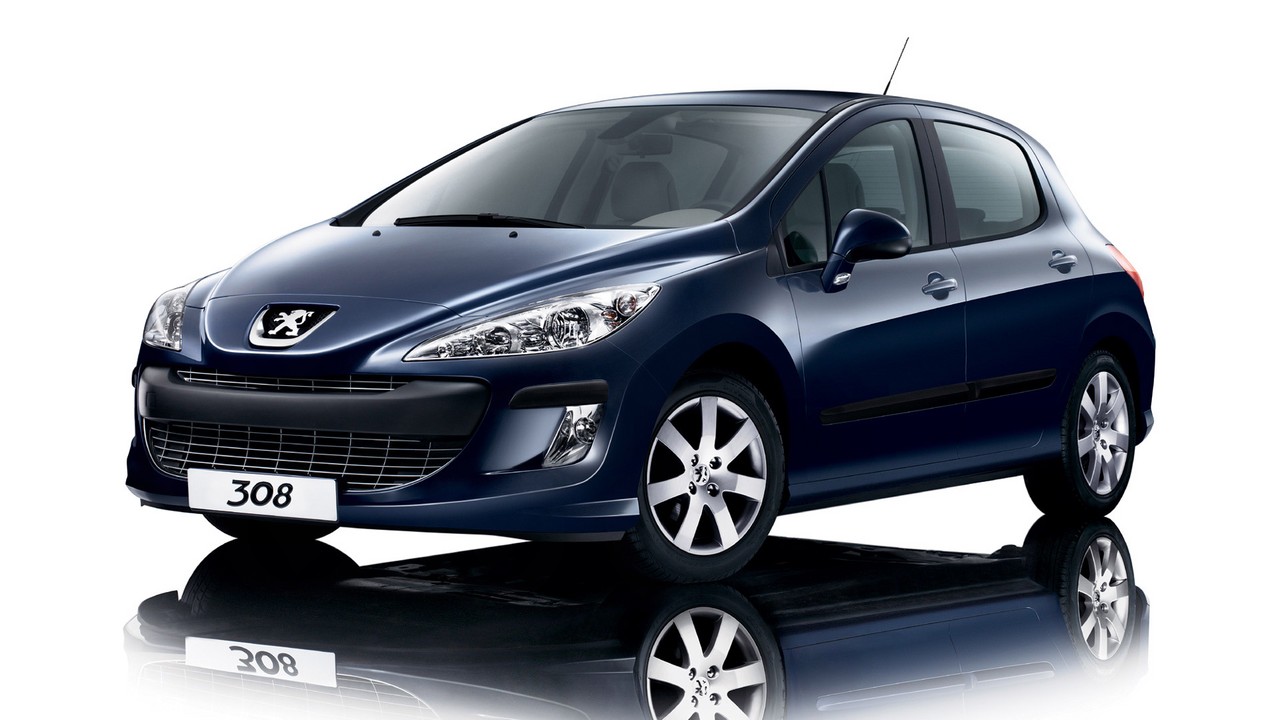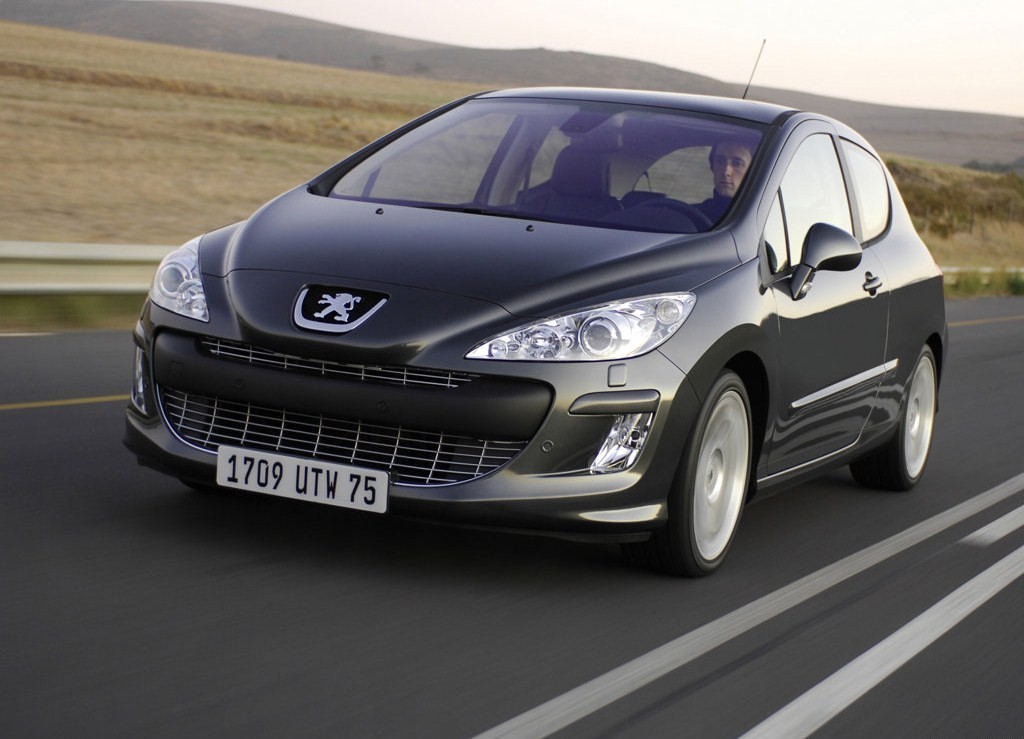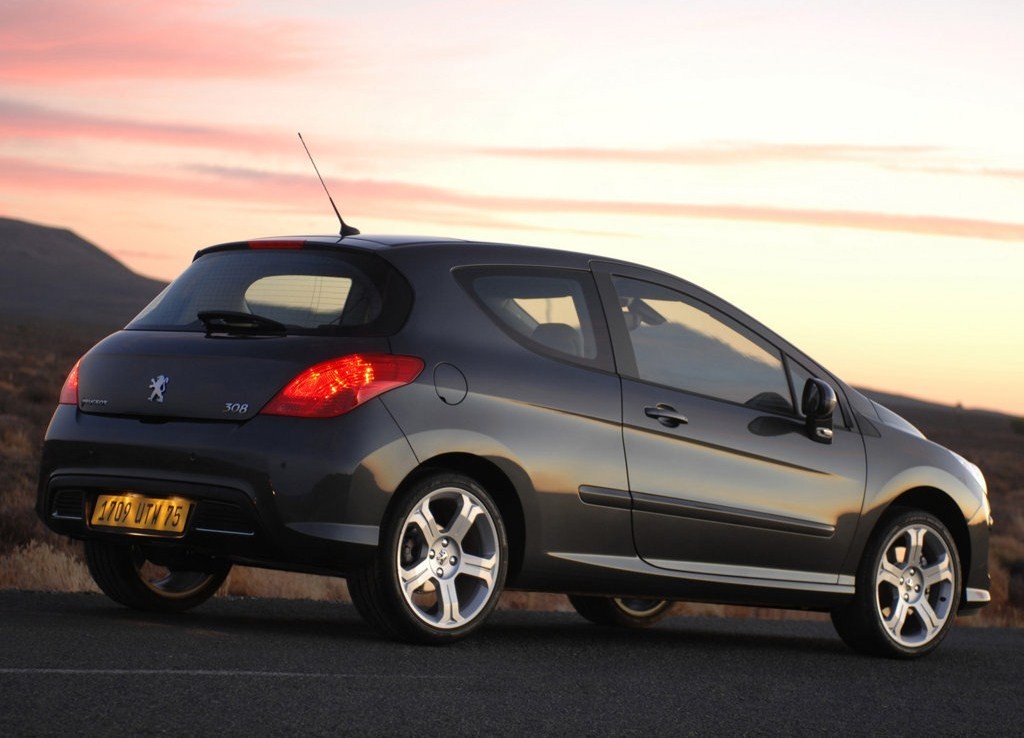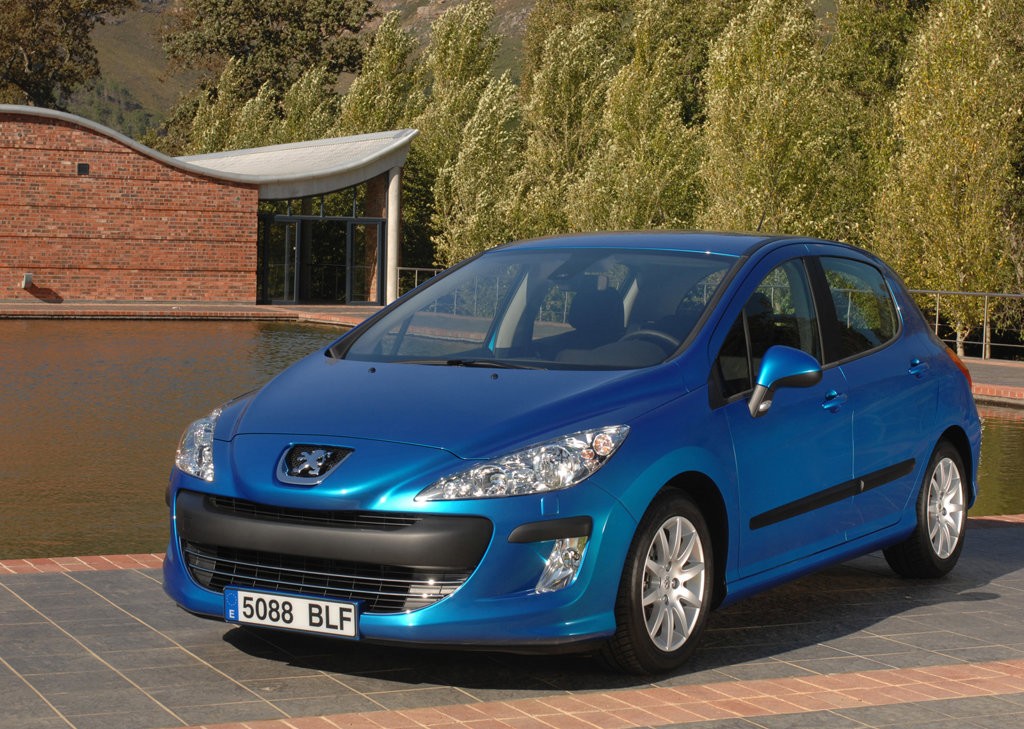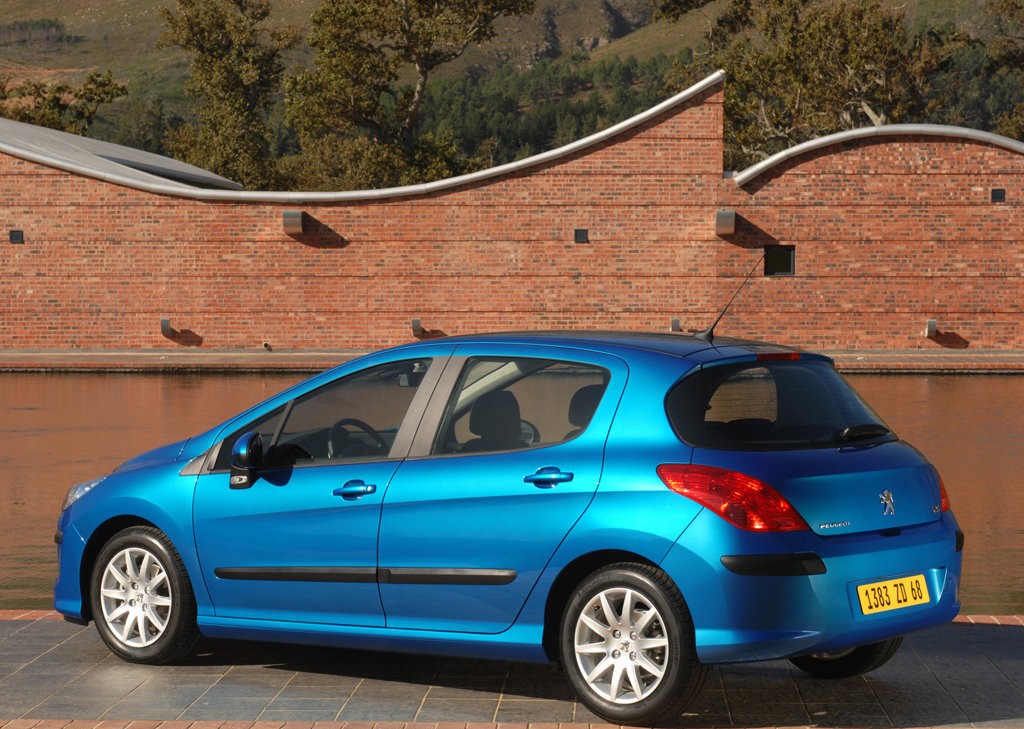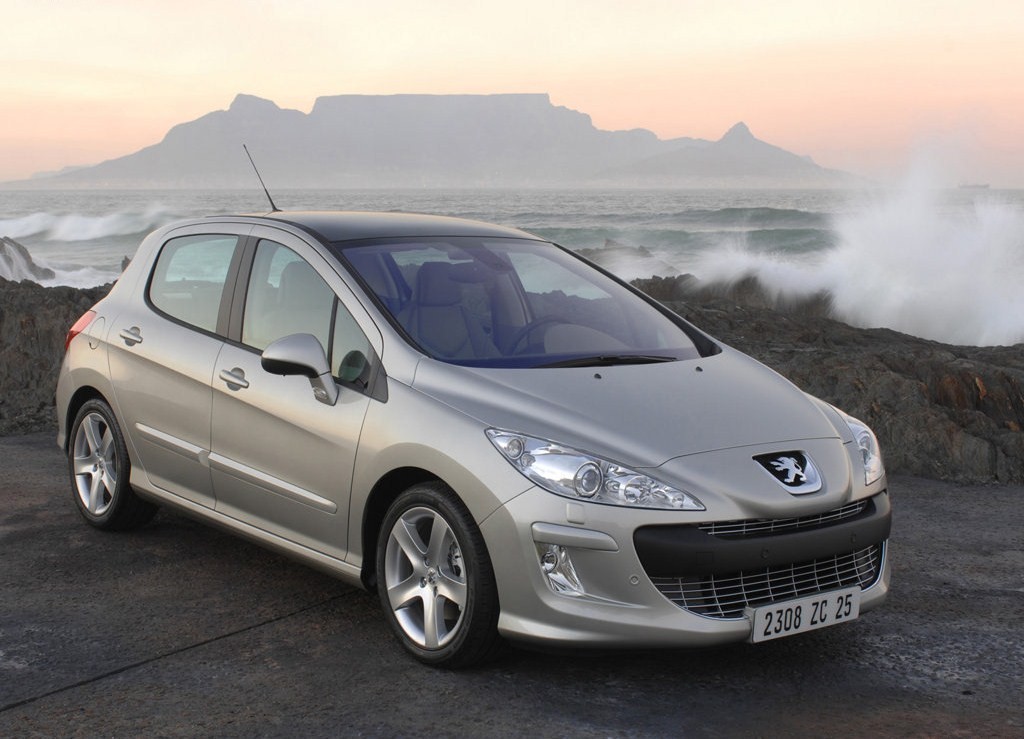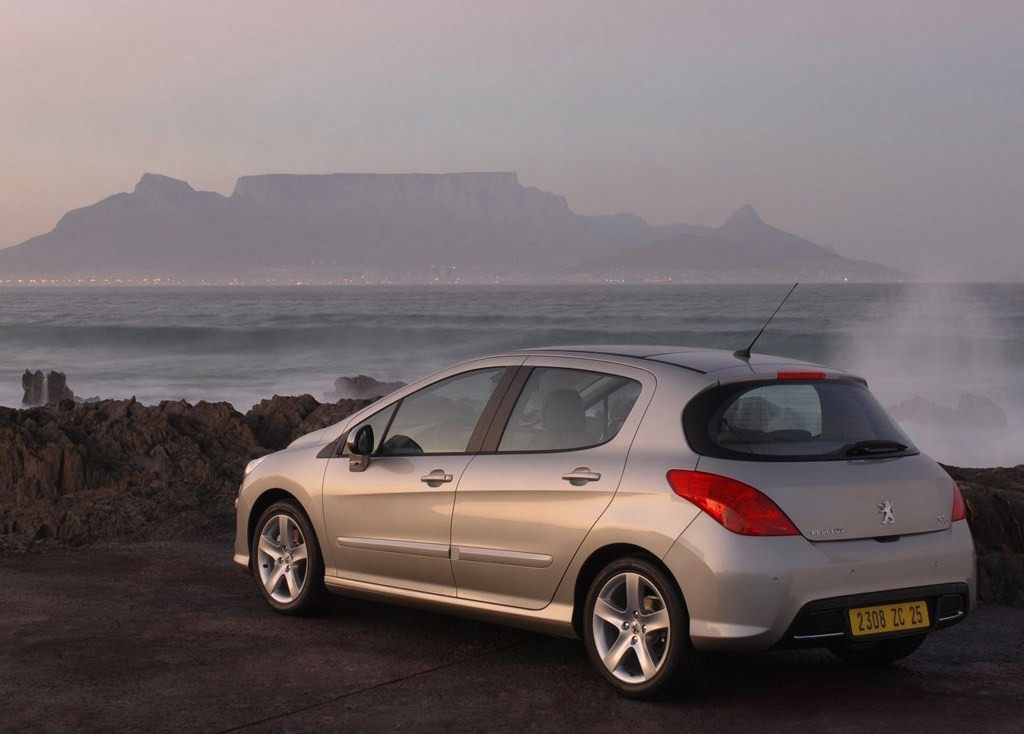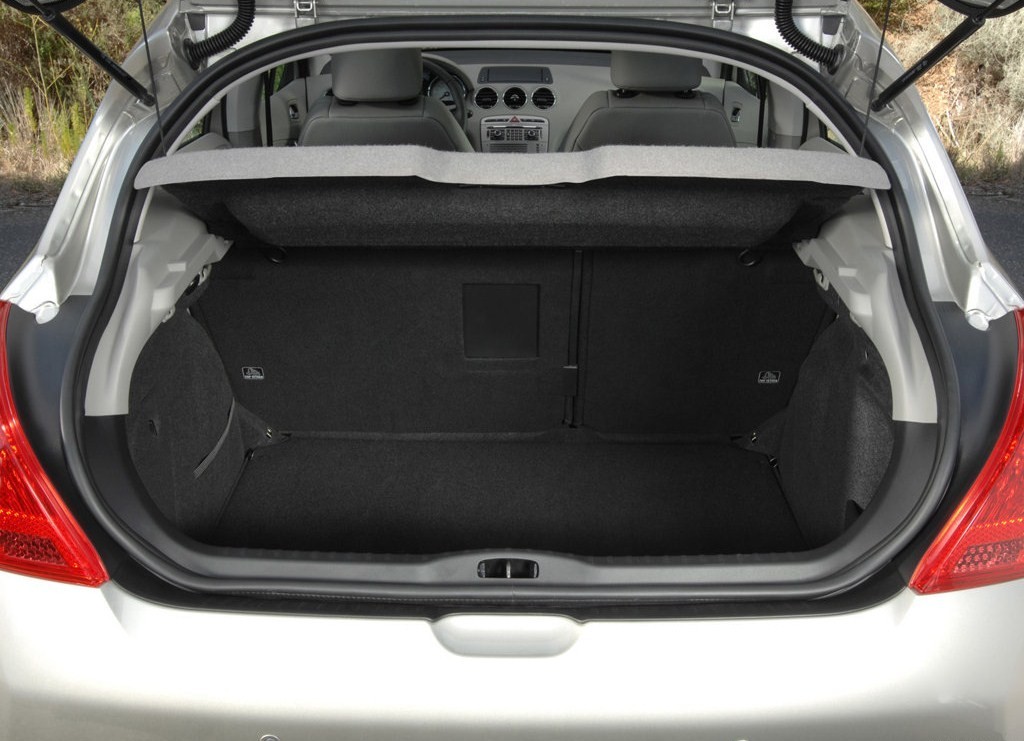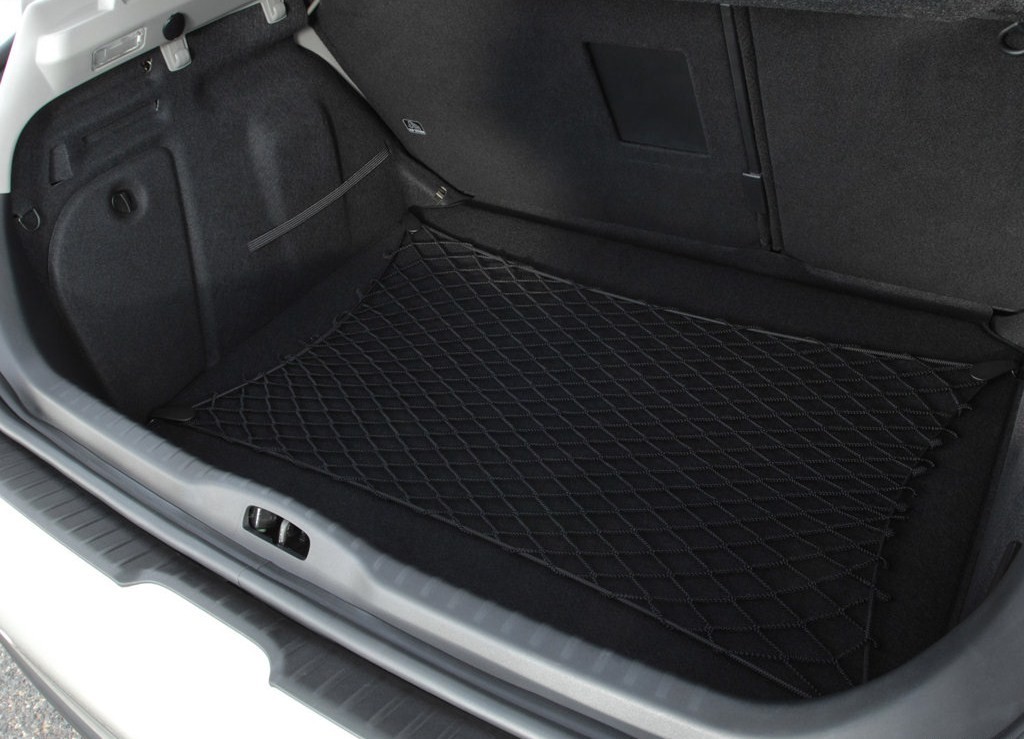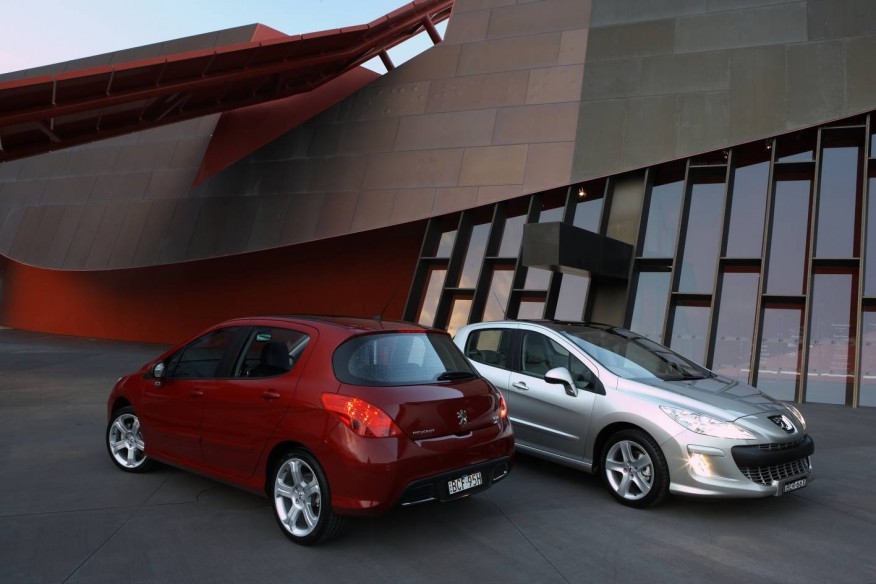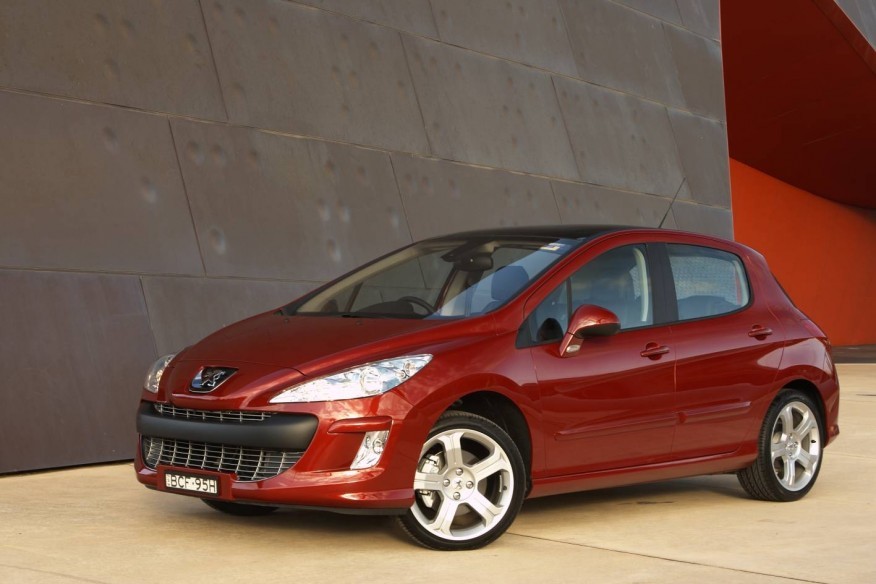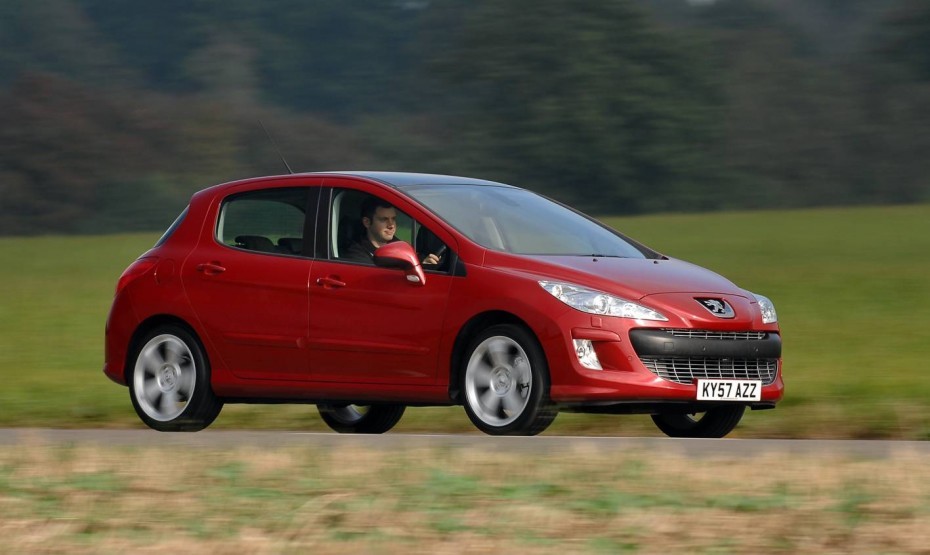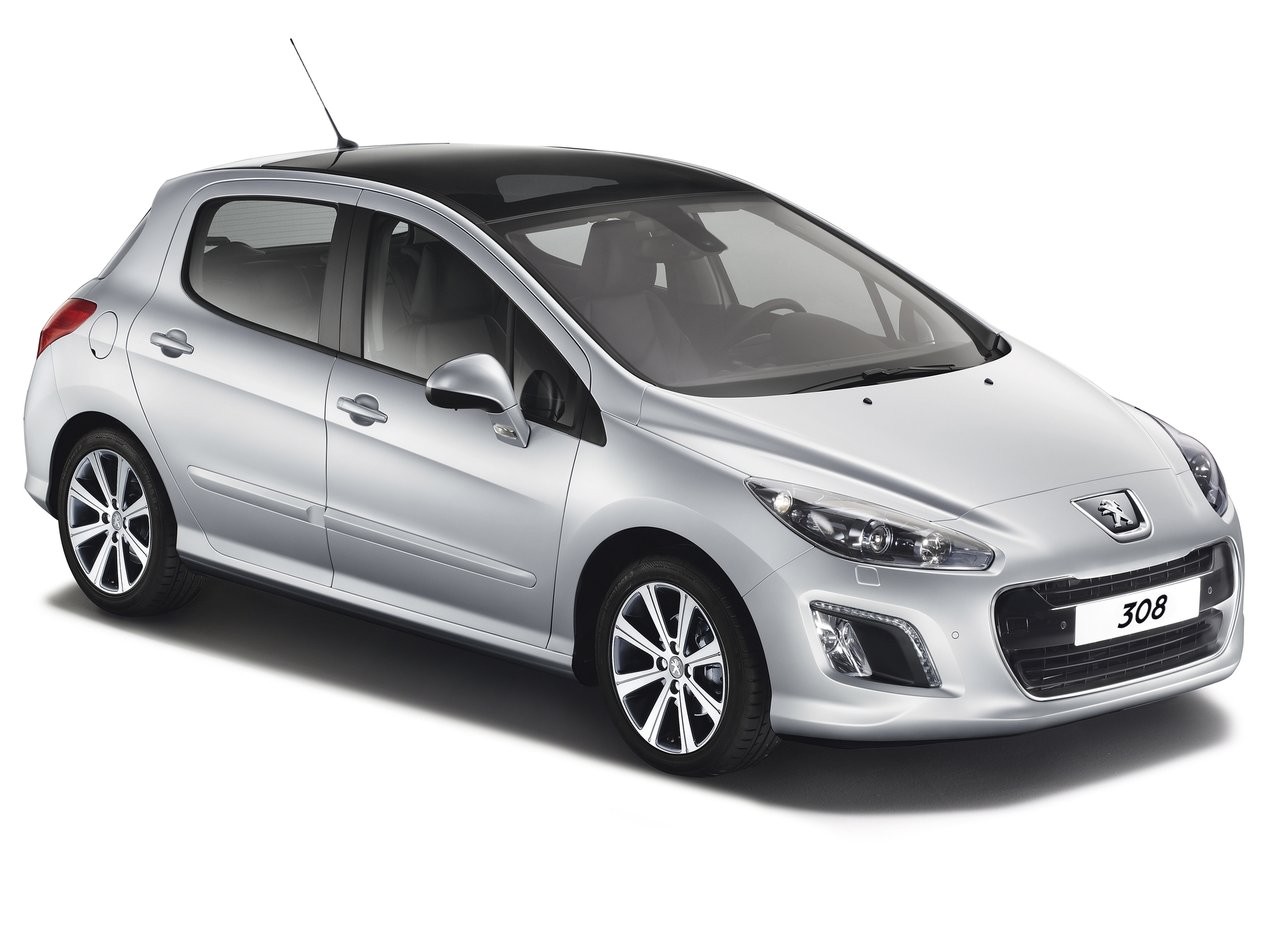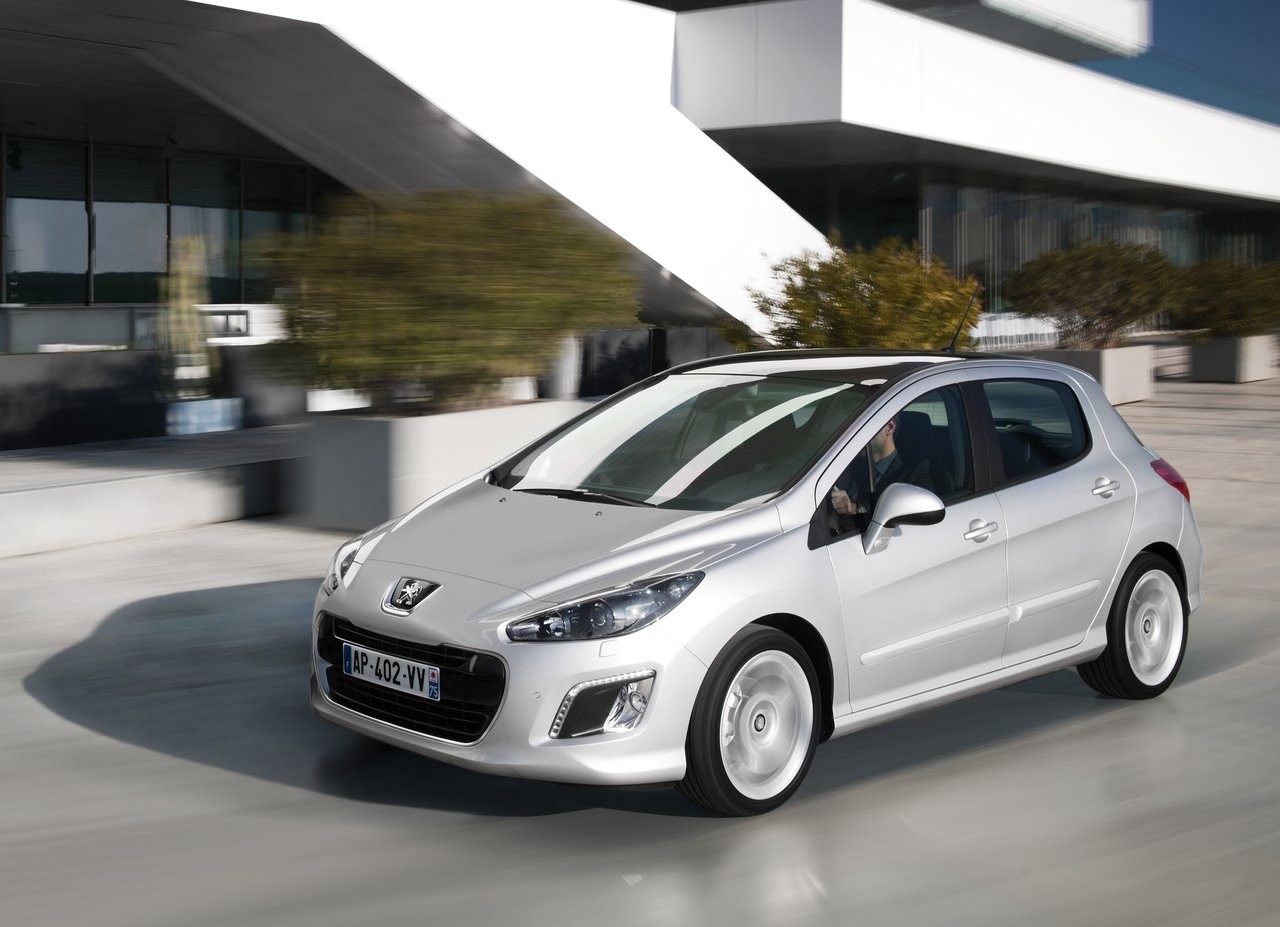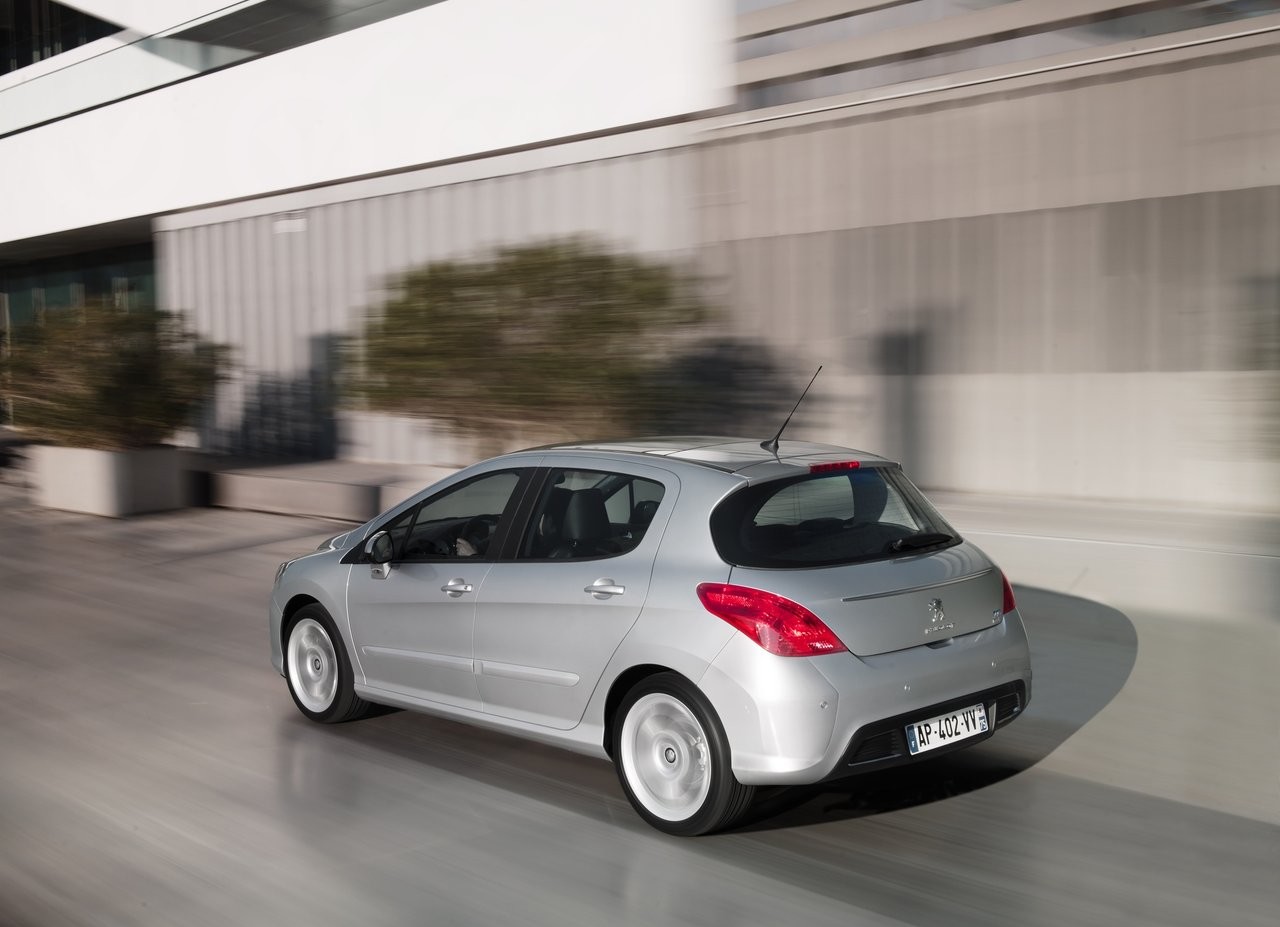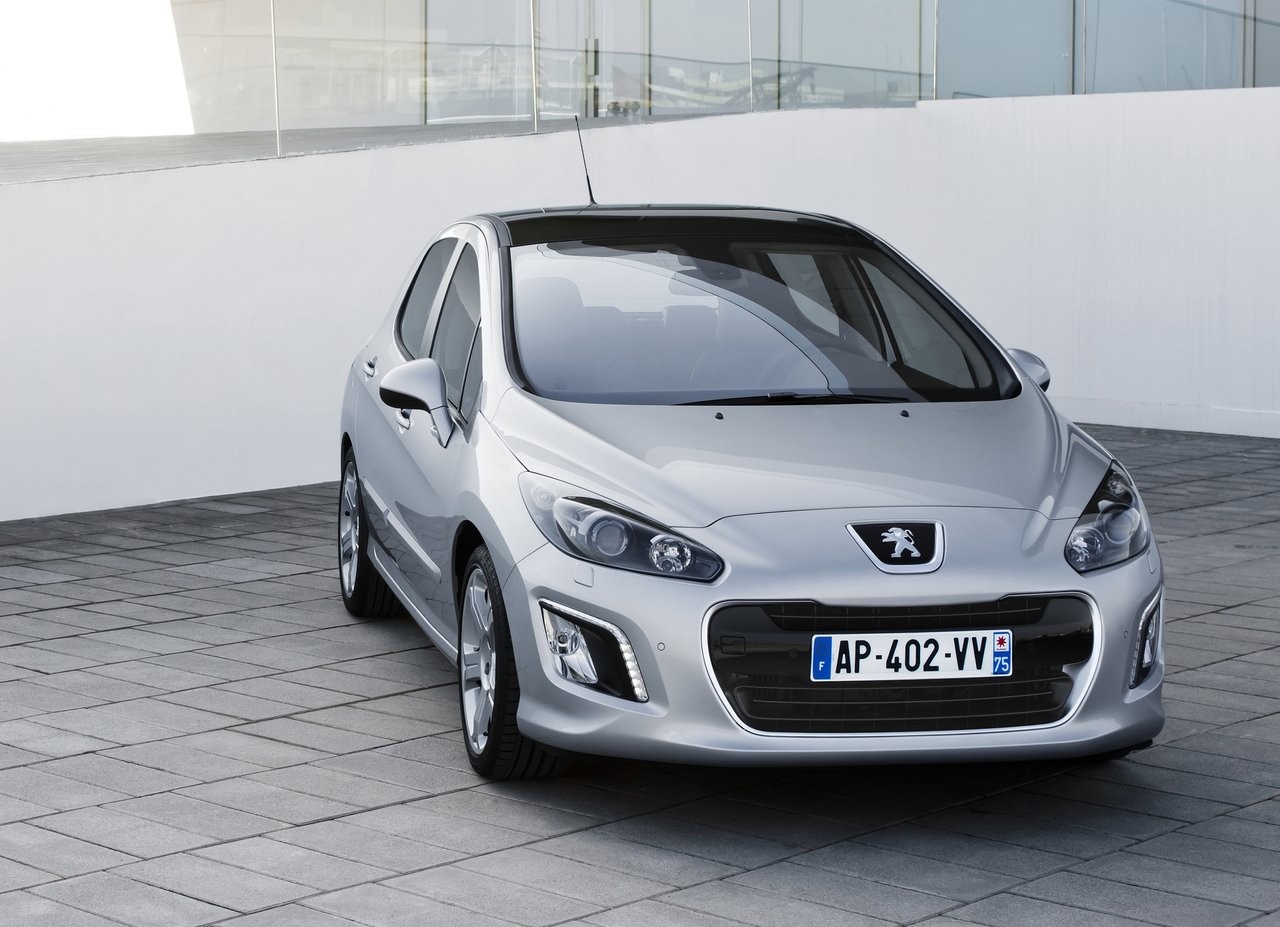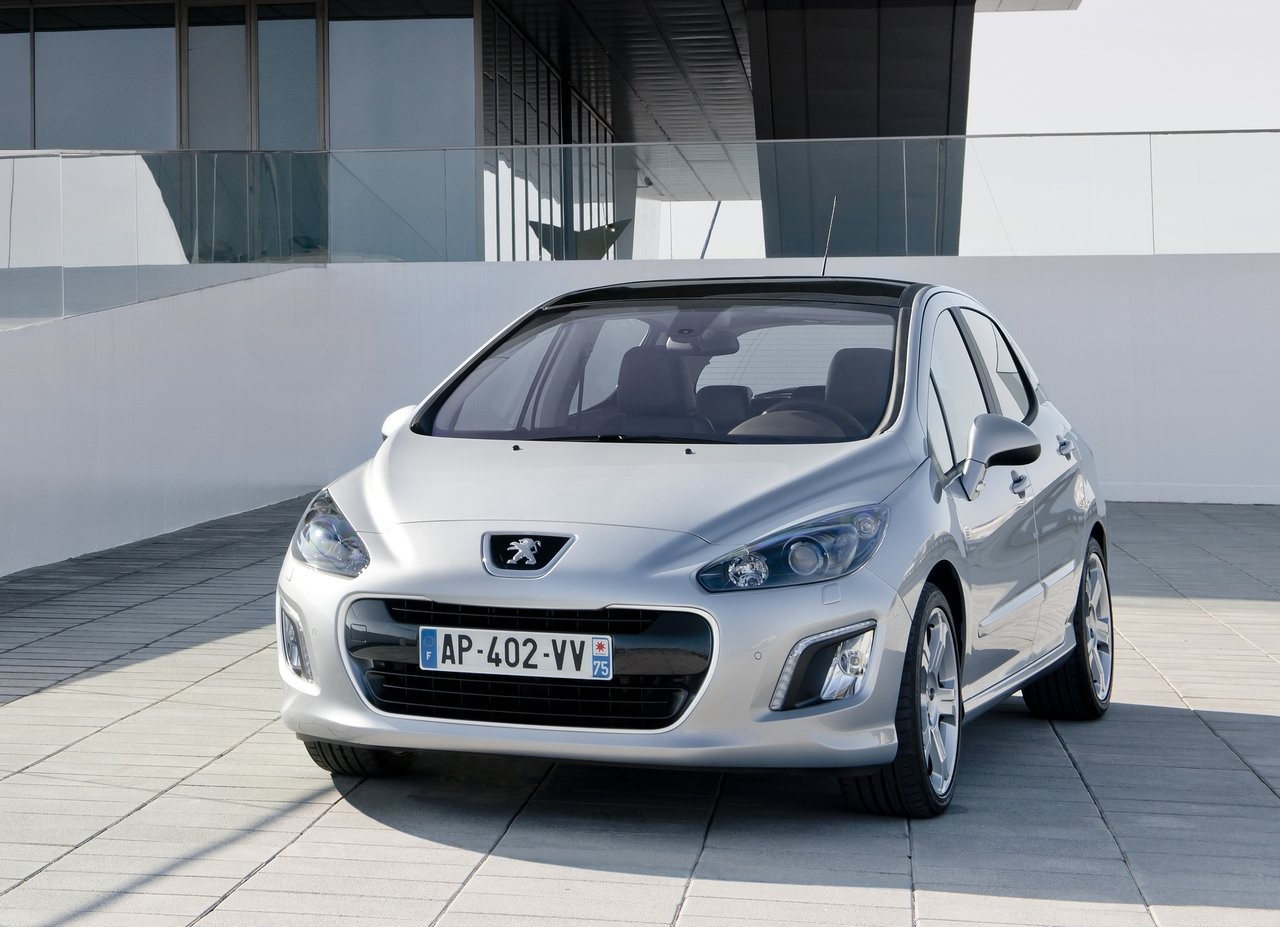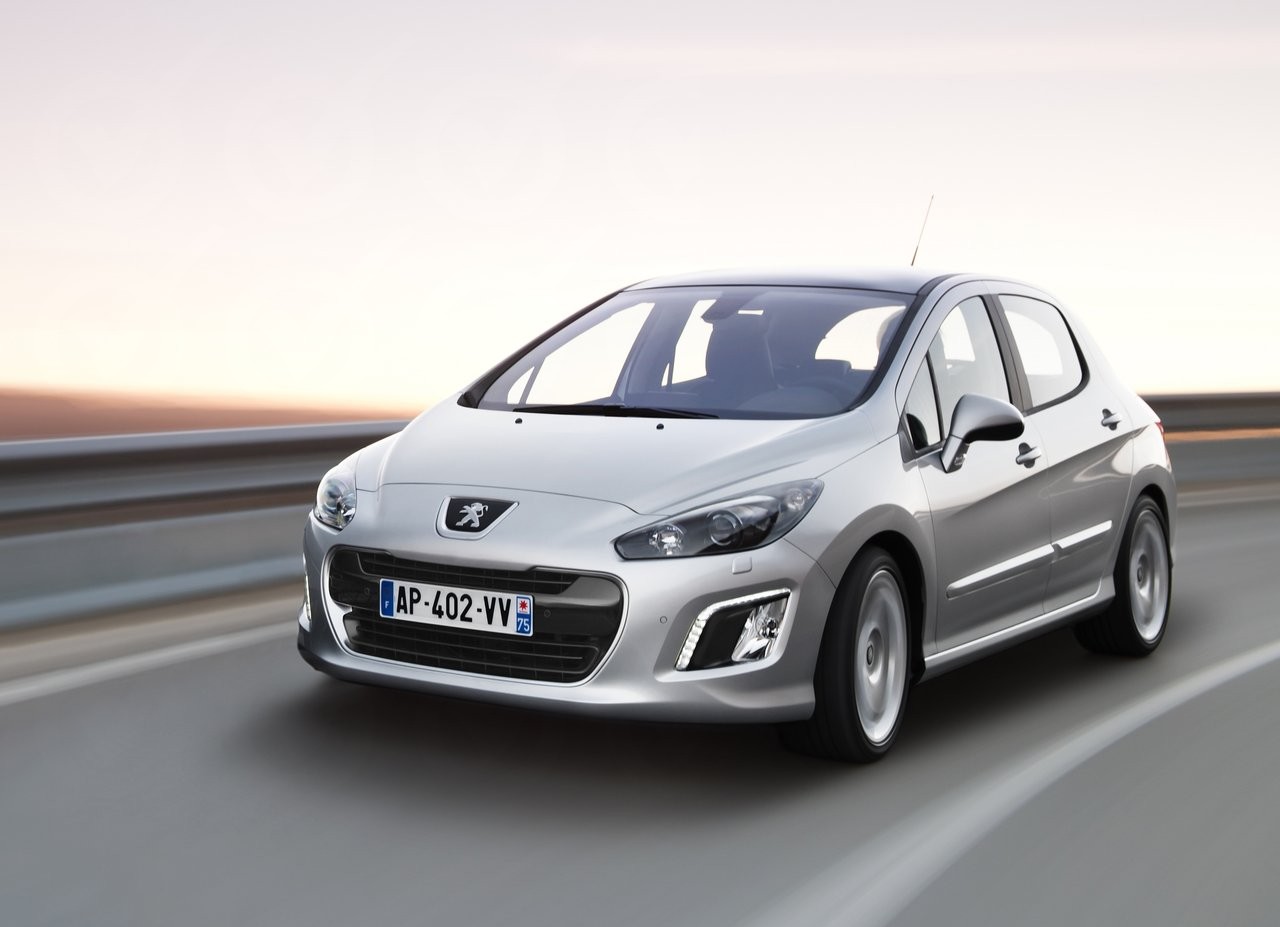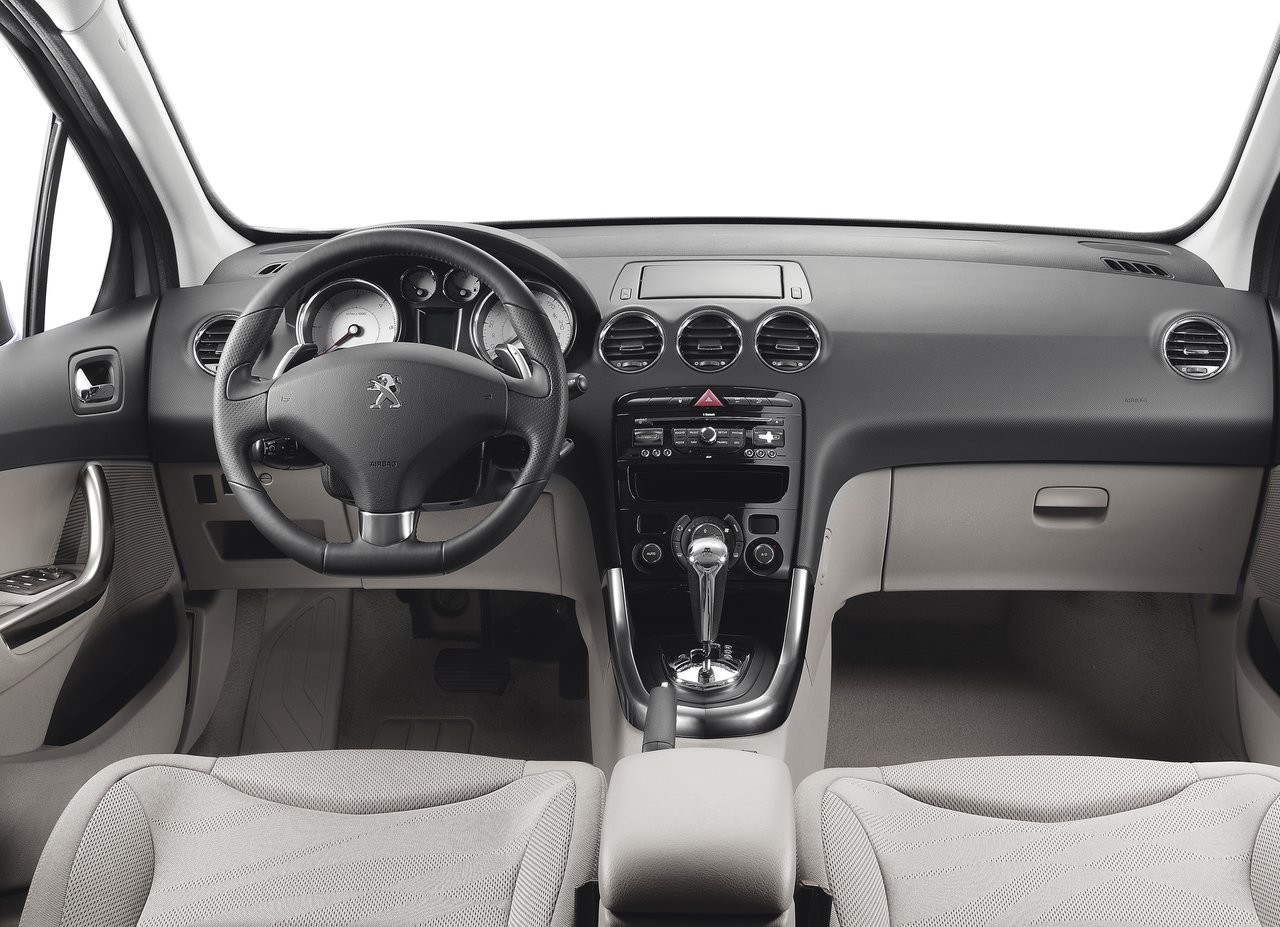
- Responsive 2.0-litre turbo-diesel engine
- Well-weighted steering
- Pleasant interior
- Competent ride/handling balance on 16-inch wheels…
- … though compliance is lost with larger wheels
- Limited driver’s seat travel
- High boot lip
- Two-tone dashboard reflects onto windscreen
Review: Peugeot T7.I 308 hatch (2008-11)
Overview
Released in February 2008, the Peugeot T7 Phase I (T7.I) 308 hatch was as a small, five-door hatchback (the 308 Wagon and Touring have been reviewed separately). Manufactured in France, the front-wheel drive 308 hatch was available with four different engines and five transmissions, including Peugeot’s ‘EGC’ semi-automatic transmission which had automatic and clutchless sequential-shifting modes.
Dimensions and suspension
Compared to the Peugeot 307 , the 308 hatch was 74 mm longer (at 4276 mm), 75 mm wider (1821 mm) and 7 mm taller (1519 mm), though wheelbase length (2608 mm) was unchanged. Furthermore, the 308 hatch had pseudo MacPherson type front struts, a torsion beam rear axle and electrohydraulic power steering.
March 2010 updates
From March 2010, the 1.6-litre four-cylinder turbocharged petrol engine was available with a six-speed automatic transmission and peak power increased by 5 kW. In October 2010, the 1.6- and 2.0-litre four-cylinder turbo-diesel engines were modified for compliance with Euro V emission standards – these changes also resulted in increased power and torque outputs.
| Variant | Engine | Edition | Trans. | Years | Peak power | Peak torque |
|---|---|---|---|---|---|---|
| 1.6 | 1598 cc EP6 petrol I4 | XS | 4sp auto, 5sp man. |
2008-11 | 88 kW at 6000 rpm | 160 Nm at 4250 rpm |
| XSE | 4sp auto | 2008-09 | ||||
| 1.6 HDi | 1560 cc DV6 turbo-diesel I4 | XS | 6sp EGC, 6sp man. |
2008-10 | 80 kW at 4000 rpm | 240 Nm at 1750 rpm |
| 2010-11 | 82 kW at 3600 rpm | 270 Nm at 1750 rpm | ||||
| XSE | 6sp EGC | 2008-10 | 80 kW at 4000 rpm | 240 Nm at 1750 rpm | ||
| 2010-11 | 82 kW at 3600 rpm | 270 Nm at 1750 rpm | ||||
| 2.0 HDi | 1997 cc DW10B turbo-diesel I4 | XSE | 6sp man., 6sp auto |
2008-10 | 100 kW at 4000 rpm | 320 Nm at 2000 rpm |
| XTE, Sportium |
6sp auto | |||||
| 2.0 HDi | 1997 cc DW10C turbo-diesel I4 | XSE | 6sp man., 6sp auto |
2010-11 | 120 kW at 3750 rpm | 340 Nm at 2000 rpm |
| XTE, Sportium |
6sp auto | |||||
| 1.6 Turbo | 1598 cc EP6DT turbo petrol I4 | XSE | 5sp man., 4sp auto |
2008-10 | 110 kW at 5800 rpm | 240 Nm at 1400 rpm |
| XTE | 4sp auto | 2008-10 | ||||
| 1598 cc EP6CDT turbo petrol I4 | XSE | 6sp man., 6sp auto |
2010-11 | 115 kW at 6000 rpm | 240 Nm at 1400 rpm | |
| XTE, Sportium |
6sp auto | 2010-11 | ||||
| 1598 cc EP6DTS turbo petrol I4 | XTS | 6sp man. | 2009-11 | 128 kW at 6000 rpm | 240 Nm at 1600 rpm |
Safety equipment
Standard safety equipment for the 308 XS included dual front airbags, front side airbags, full-length curtain airbags, ABS, brake assist, electronic brake force distribution, front seatbelt pretensioners and load limiting seatbelts for the front and outer rear seats.
The 308 XSE, XTE and XTS were also fitted with electronic stability control.
Euro NCAP testing
In Euro NCAP testing , a 2009 308 hatchback with a 1.6-litre turbo-diesel engine – and equipped with a driver’s knee airbag (unavailable in Australia) – received a five star safety rating which included an 82 per cent adult occupant protection rating and an 81 per cent child occupant protection rating. In the frontal offset impact, there was a slight risk of serious chest and leg injury for the front occupants. In the pole impact test, chest protection was poor. Under ANCAP’s methodology , this testing resulted in an adult occupant protection rating of 35.32 out of 37.
Features: 308 XS, XSE and XTS
Standard features for the 308 XS included 15-inch steel wheels, six speaker sound system with CD player, MP3-compatibiltiy and auxiliary input, dual zone climate control air conditioning, chilled glovebox, cruise control with speed limiter, front and rear fog lamps, split and folding rear seats with ski port, steering wheel audio controls, remote central locking, power windows and heated mirrors, a tilt and reach adjustable steering wheel, height adjustable front seats, a trip computer, a 12 volt power outlet and an immobiliser.
Beyond this, the 308 XSE added 16-inch alloy wheels, rear parking sensors, automatic headlights, rain-sensing wipers and a leather-wrapped steering wheel. The 308 XTE was further equipped with 17-inch alloy wheels, five-disc CD stacker, panoramic sunroof with blind, fragrance diffuser, power folding mirrors, illuminated vanity mirrors for front passengers, tyre pressure monitor and an electrochromatic rear-view mirror.
The range-topping 308 XTS was distinguished by its 18-inch alloy wheels, lower ride height, dual zone climate control air conditioning, Bluetooth connectivity, sports seats with leather bolsters, leather steering wheel, aluminium gearshift and pedals, directional xenon headlights, front fog lamps and chrome exhaust tip.
2010 Peugeot 308 Sportium
In September 2010, the Sportium variants were released; compared to the XSE, the Sportium was distinguished by its 17-inch alloy wheels, Bluetooth connectivity, USB input, leather-wrapped sports steering wheel, headlight washers, aluminium pedals and door sills and sports bumpers.
Brochure
Related links
Review: Peugeot T7.II 308 hatch (2011-13)
Overview
Released in August 2011, the T7 Phase II (T7.II) 308 hatch introduced a revised range and updated styling. The 308 hatch was available with five engines, including the 1.6 e-HDi engine mated to a six-speed ‘EGC’ semi-automatic transmission – that automatic and clutchless manual modes – that would automatically shut down when stationary to conserve fuel. There were also three editions: Access, Active and Allure. The full range is given in the table below.
Compared to its T7.I predecessor, the T7.II 308 chassis made greater use of high strength steel and ‘multilayer’ reinforcements for a stronger structure (and weight reduction). Visually, the T7.II 308 hatch could be identified by its redesigned V-shaped bonnet with Peugeot badge at its tip and new smooth glass front headlights. Inside, the dashboard was sloped for greater visibility, while higher quality and soft-touch materials were more prevalent.
| Variants | Engine | Editions | Trans. | Peak power | Peak torque |
|---|---|---|---|---|---|
| 1.4 | 1397 cc EP3 petrol I4 | Access | 5sp man. | 72 kW at 6000 rpm | 136 Nm at 4000 rpm |
| 1.6 | 1598 cc EP6C petrol I4 | Access | 4sp auto, 5sp man. |
88 kW at 6000 rpm | 160 Nm at 4250 rpm |
| 1.6 Turbo | 1598 cc EP6CDT turbo petrol I4 | Active | 6sp man. | 115 kW at 6000 rpm | 240 Nm at 1400 rpm |
| Active, Allure |
6sp auto | ||||
| 1.6 e-HDi | 1560 cc DV6C turbo-diesel I4 | Access | 6sp semi-auto | 82 kW at 3600 rpm | 270 Nm at 1750 rpm |
| 2.0 HDi | 1997 cc DW10C turbo-diesel I4 | Active | 6sp man. | 110 kW at 3750 rpm | 340 Nm at 2000 rpm |
| Active, Allure |
6sp auto | 120 kW at 3750 rpm | 340 Nm at 2000 rpm |
Safety equipment
Compared to its T7.I predecessor, standard safety equipment for the T7.II 308 was extended to include electronic stability control and traction control.
Features
Standard features for the Access edition included 15-inch steel wheels, a six speaker sound system with CD player, MP3-compatibility and auxiliary inputs (3.5mm/USB), Bluetooth connectivity, air conditioning (including glove box), cruise control (with brake function), front and rear fog lights, a leather-trimmed steering wheel with audio controls, 60/40 split and folding rear seats, remote central locking, power windows and heated mirrors, a height and reach adjustable steering wheel, height adjustable front seats, a 12 volt power outlet, cargo cover, trip computer and an immobiliser.
The Active editions were further equipped with 16-inch alloy wheels, dual-zone climate control air conditioning, daytime LED running lights, automatic headlights, rain-sensing wipers, rear parking sensors, power folding mirrors and an electrochrome rear view mirror. Beyond this, the Allure added 17-inch alloy wheels, leather/cloth seat trim and a panoramic glass roof with a power-operated blind.
2013 Peugeot 308 1.6 Turbo: Style and Sportium editions
For 2013, the 1.6 Turbo variant was available in Style and Sportium editions. The Style edition was similarly equipped to the entry-level Access edition, but distinguished by its turbocharged engine.
Compared to the mid-range Active edition, the Sportium was further equipped with 17-inch alloy wheels with 225/45 R17 W tyres and satellite navigation, but omitted the rear parking sensors, power folding mirrors and electrochrome rear view mirror.
Brochure
Related links
- Specifications: Peugeot T7.II 308 (December 2013)
- Specifications: Peugeot T7.II 308 Hatch (July 2014)
- Wikipedia.org: Peugeot 308
